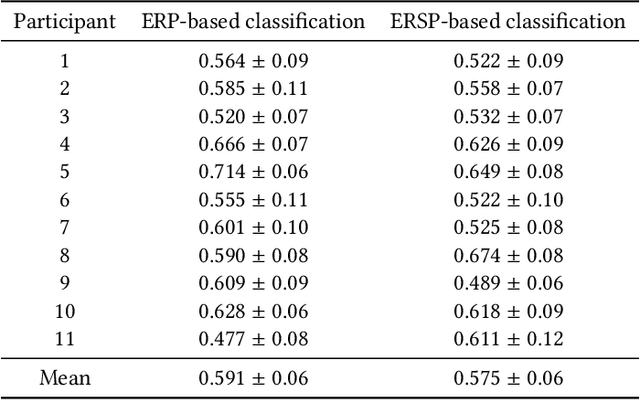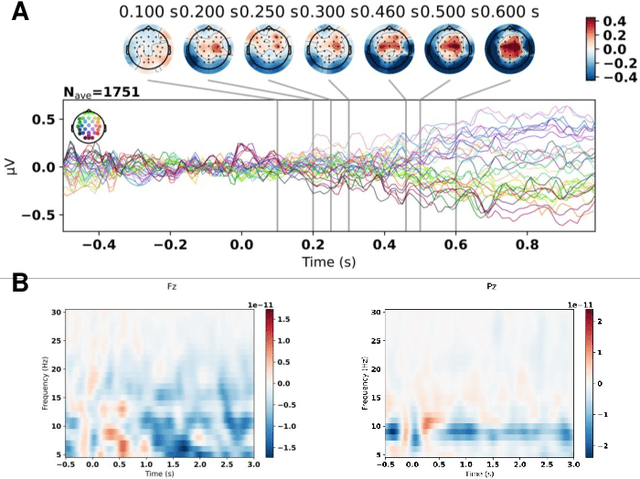Sebastian Halder
Overview of The MediaEval 2022 Predicting Video Memorability Task
Dec 13, 2022Abstract:This paper describes the 5th edition of the Predicting Video Memorability Task as part of MediaEval2022. This year we have reorganised and simplified the task in order to lubricate a greater depth of inquiry. Similar to last year, two datasets are provided in order to facilitate generalisation, however, this year we have replaced the TRECVid2019 Video-to-Text dataset with the VideoMem dataset in order to remedy underlying data quality issues, and to prioritise short-term memorability prediction by elevating the Memento10k dataset as the primary dataset. Additionally, a fully fledged electroencephalography (EEG)-based prediction sub-task is introduced. In this paper, we outline the core facets of the task and its constituent sub-tasks; describing the datasets, evaluation metrics, and requirements for participant submissions.
Experiences from the MediaEval Predicting Media Memorability Task
Dec 07, 2022


Abstract:The Predicting Media Memorability task in the MediaEval evaluation campaign has been running annually since 2018 and several different tasks and data sets have been used in this time. This has allowed us to compare the performance of many memorability prediction techniques on the same data and in a reproducible way and to refine and improve on those techniques. The resources created to compute media memorability are now being used by researchers well beyond the actual evaluation campaign. In this paper we present a summary of the task, including the collective lessons we have learned for the research community.
Overview of the EEG Pilot Subtask at MediaEval 2021: Predicting Media Memorability
Dec 15, 2021

Abstract:The aim of the Memorability-EEG pilot subtask at MediaEval'2021 is to promote interest in the use of neural signals -- either alone or in combination with other data sources -- in the context of predicting video memorability by highlighting the utility of EEG data. The dataset created consists of pre-extracted features from EEG recordings of subjects while watching a subset of videos from Predicting Media Memorability subtask 1. This demonstration pilot gives interested researchers a sense of how neural signals can be used without any prior domain knowledge, and enables them to do so in a future memorability task. The dataset can be used to support the exploration of novel machine learning and processing strategies for predicting video memorability, while potentially increasing interdisciplinary interest in the subject of memorability, and opening the door to new combined EEG-computer vision approaches.
Overview of The MediaEval 2021 Predicting Media Memorability Task
Dec 11, 2021Abstract:This paper describes the MediaEval 2021 Predicting Media Memorability}task, which is in its 4th edition this year, as the prediction of short-term and long-term video memorability remains a challenging task. In 2021, two datasets of videos are used: first, a subset of the TRECVid 2019 Video-to-Text dataset; second, the Memento10K dataset in order to provide opportunities to explore cross-dataset generalisation. In addition, an Electroencephalography (EEG)-based prediction pilot subtask is introduced. In this paper, we outline the main aspects of the task and describe the datasets, evaluation metrics, and requirements for participants' submissions.
 Add to Chrome
Add to Chrome Add to Firefox
Add to Firefox Add to Edge
Add to Edge